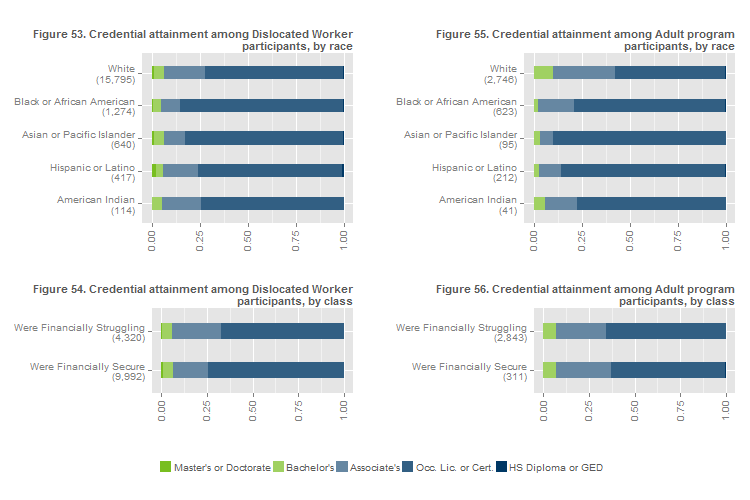Figures 53 through 56 show the type of credential attained, among those who successfully completed credentialed, classroom training.

Although possible, participants who complete a multi-year degree through the program tend to enter with at least some credits toward that degree-it is rare for the program to support a participant in school for more than two years (See Note 1). The choice of credential will vary based on the participant's prior educational attainment and occupational goal. It will also depend on the participant's ability and desire to take on long-term coursework rather than shorter term classes.
The vast majority (nearly three quarters) of credentials earned through the program are occupational licenses or certificates. Second in popularity are Associate's degrees. On average, we would expect an Associate's degree to have a higher payoff than an occupational certificate (See Note 2).
About a quarter of white, Hispanic or Latino, and American Indian Dislocated Worker participants obtained a degree higher than an occupational license or certificate (Figure 53). Differences by race are much starker among Adult program participants: nearly half of white Adult program participants in obtained a degree higher than an occupational license or certificate, compared to about 10% of Asian or Pacific Islander participants (Figure 55).
Differences in credential types are less pronounced by class, among participants in both programs (Figures 54 and 56).